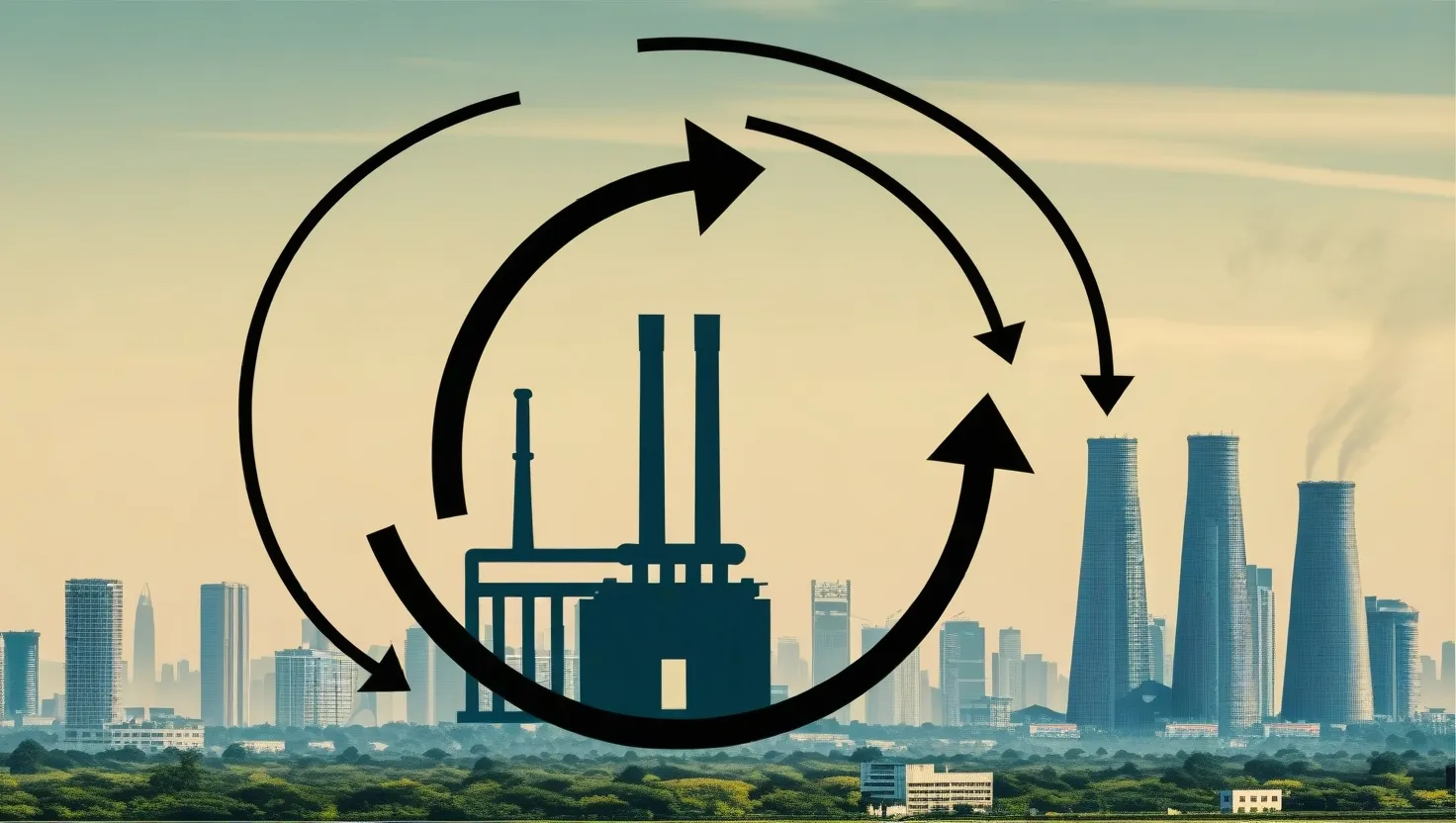In the intricate web of global energy dynamics, a financial phenomenon known as circular debt has become a significant hurdle, particularly in developing countries. This complex issue is more than just a financial bottleneck; it has far-reaching implications for energy security, economic growth, and the transition to renewable energy.
To understand circular debt, let’s start with its basics. It occurs when power companies are unable to pay their fuel suppliers due to unpaid bills from consumers and inadequate government subsidies. This creates a vicious cycle where the lack of payment from one entity in the energy supply chain affects the entire system.
In Pakistan, for instance, circular debt has become a chronic problem. The current balance of circular debt is staggering, equivalent to about 5.1% of the country’s GDP and standing at a whopping Rs5.5 trillion as of early 2024. This figure is not just a number; it reflects the deep-seated issues within the energy sector.
One of the primary causes of circular debt is the mismatch between the cost of generating electricity and the revenue collected from consumers. The government, in an effort to protect consumers from high electricity costs, often provides subsidies. However, these subsidies are frequently delayed or inadequately funded, leading to a significant gap between the cost of electricity generation and the revenues collected. For example, in Pakistan, the government’s tariff differential subsidies (TDS) are often partially and delayedly paid, contributing heavily to the circular debt flow.
Another critical factor is the inefficiency within the distribution companies (DISCOs). Outdated metering practices, low collection rates, high technical losses, and rampant theft are common issues. These inefficiencies mean that the revenue collected does not fully cover the cost of electricity supply, further exacerbating the circular debt. The World Bank has highlighted that despite efforts to reduce theft and billing defaults, the power sector circular debt continues to grow due to these operational and technical inefficiencies.
The reliance on imported fuel for power generation also makes countries vulnerable to global oil and gas price fluctuations. When these cost changes are not reflected in consumer tariffs in a timely manner, it leads to debt accumulation. For instance, Pakistan’s signing of “take-or-pay” contracts for large, imported coal and gas power plants increased capacity payments by 50% and exposed the country to significant international fossil fuel price volatility.
The impact of circular debt is multifaceted. It puts a strain on power producers, affecting their ability to procure fuel or maintain operations. This financial instability hinders their capacity to invest in technology upgrades and ensure smooth operations, leading to reduced energy production and an increased risk of power outages. In Pakistan, this has resulted in industries suffering from inconsistent power supply, leading to reduced production and economic slowdown.
Circular debt also deters potential investors, leading to a lack of crucial infrastructure upgrades and modern technologies in the energy sector. Investor confidence is crucial for the growth and modernization of the energy sector, but the shadow of circular debt discourages both local and foreign investors from committing resources to energy projects. This lack of investment translates to delayed infrastructure upgrades, hampering the sector’s ability to meet growing energy demands and adopt cleaner and more efficient technologies.
The economic implications are profound. Reliable and affordable energy is essential for a country’s economic prosperity. The persistent circular debt issue disrupts the energy supply chain, causing industries to operate at suboptimal levels. Reduced production not only affects revenue generation for businesses but also hampers economic growth and development. Additionally, the redirection of funds to tackle circular debt detracts from investments in critical infrastructure and social development projects.
Breaking this vicious cycle requires a comprehensive approach. One of the key measures is the adoption of a circular debt reduction plan. In Pakistan, authorities adopted such a plan in 2019, aiming to reduce the annual flow of new circular debt and eliminate all new arrears by the end of FY2023. This plan includes measures such as improving revenue collection, reducing transmission and distribution losses, and ensuring timely payment of subsidies.
Another crucial step is transitioning away from fossil fuels and towards renewable energy. Developing a diversified energy mix that includes solar, wind, and hydro power can provide a buffer against the volatility of fossil fuel prices. Pakistan, for example, has significant untapped hydro, solar, and wind power potential. However, large variations in seasonal peak demand create challenges for the deployment of renewable energy, requiring simultaneous expansion and strengthening of the transmission grid.
Improving governance and transparency within the energy sector is also vital. Weak governance and poor fiscal management have been major constraints in Pakistan’s energy sector. Addressing these issues involves concessioning distribution companies to the private sector, reducing the cost of generation, and improving supply-side efficiency and collections.
The World Bank has emphasized the need for comprehensive sector reforms, including tariff reform to align tariffs with the cost of supply. Timely tariff increases, coupled with subsidy rationalization reforms, are essential steps. However, these reforms must be balanced to avoid further burdening consumers, especially in a country where energy affordability is a critical issue.
In conclusion, circular debt is a complex problem that requires a multifaceted solution. It is not just a financial issue but has deep implications for energy security, economic growth, and the transition to renewable energy. By addressing the root causes of circular debt, improving governance, and transitioning to a more diversified and sustainable energy mix, countries can break this vicious cycle and ensure a stable and thriving energy sector. This is crucial not only for the energy sector but for the overall economic prosperity and development of the country.






